From above water, Fish Rock is a very ordinary-looking seascape, but this has got to be one of the clearest examples of ‘looks can be deceptive’.
Located 2km off the coast from the picturesque seaside hamlet of South West Rocks, about five hours’ drive north of Sydney, Fish Rock appears to be little more than a tiny, vegetation-free islet of volcanic rock in the Pacific Ocean. Just below the water here, however, is a vibrant and remarkable ecosystem believed to be unique in the Southern Hemisphere.
Physically, the most defining feature about this place is a 125m-long submarine cave – a pitch-black tunnel-like ocean cavern, 12-to-24m deep, where the temperature is usually a degree cooler than the surrounding ocean water. Shine a light down here and you’ll see that the site literally ripples with marine life.
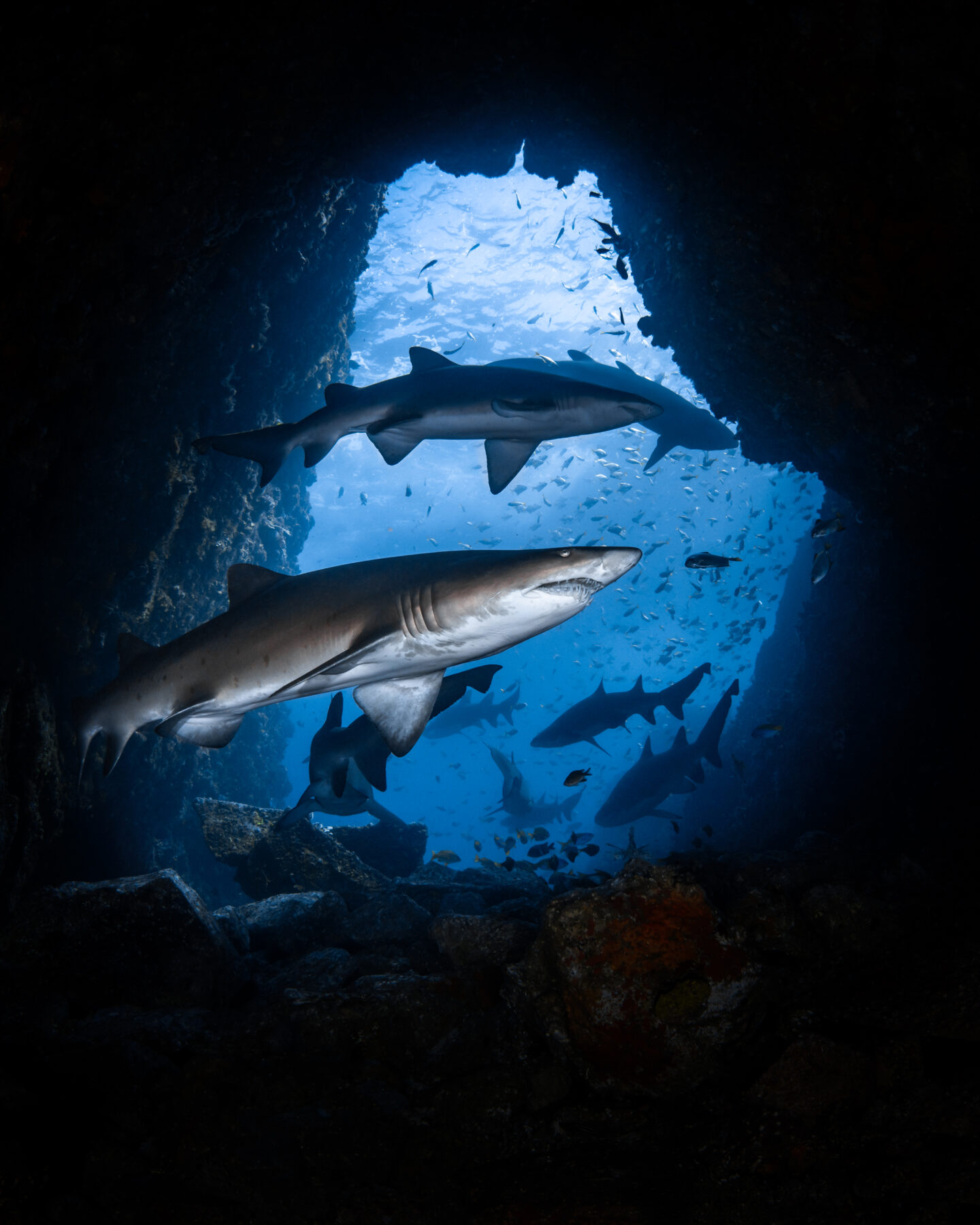
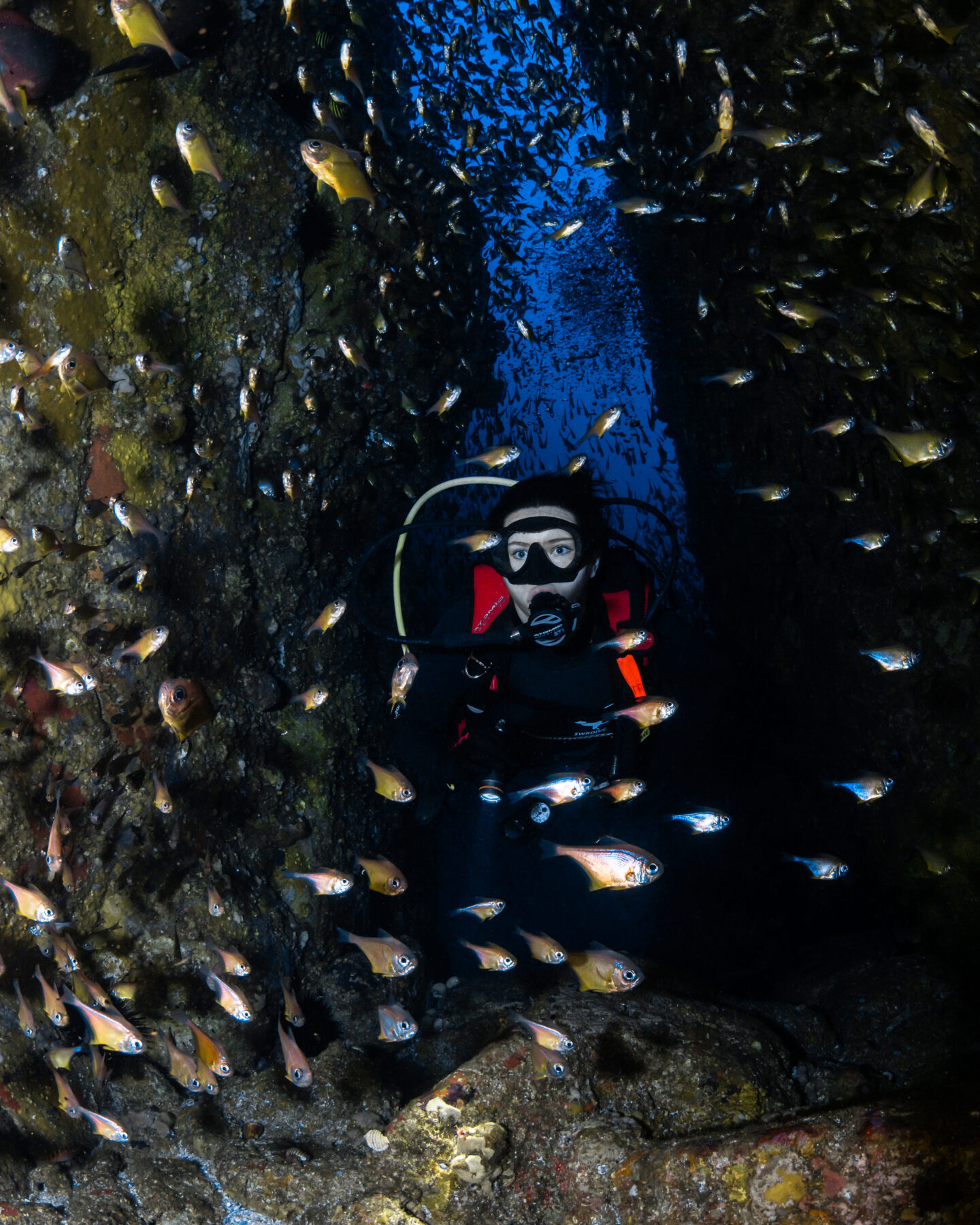
Either residing or regularly visiting here are hundreds of different species of marine life – both tropical and temperate – ranging from bull rays and wobbegong sharks to painted crayfish and giant cuttlefish. There are nudibranchs, anemones, feather stars, black coral trees and a huge array of brightly coloured sponges. It’s home to resident moray eels, batfish, a variety of wrasse, cloud-like schools of Moorish idols and at least one large blue groper that claims the cave’s entrance as its territory. Schools of jewfish, yellowtail kingfish, bream and other large fish visit the waters around Fish Rock and regularly enter its cave, as do hawksbill and green turtles.
It’s this extraordinary gathering of species that has led to Fish Rock consistently being ranked as one of the world’s top scuba-diving sites.
Ecologically speaking, what makes this place particularly important is its permanent aggregation of grey nurse sharks, a species that, in Australian waters, survives in two genetically distinct populations – one off the west coast and one off the east.
Key species
An adult grey nurse shark – also known commonly as the sand tiger shark or spotted ragged-tooth shark – is a fish-eater that’s harmless to humans, unless provoked. But its size – up to 3.6m in length – and preference for coastal habitats, as well as its mouthful of visibly sharp teeth, once saw it labelled as a “man-eating” menace and it was mercilessly targeted for culling.
The species has also long been an incidental bycatch of recreational fishers and commercial coastal fisheries, and it’s regularly caught in shark nets set along beaches to protect swimmers.
Last century grey nurse sharks were deliberately slaughtered to such an extent that, by the late 1970s, the East Coast population came perilously close to extinction. In 1984, the New South Wales government declared the species protected under the NSW Fisheries Act 1935, making the grey nurse the first shark species anywhere in the world to be afforded legal protection.
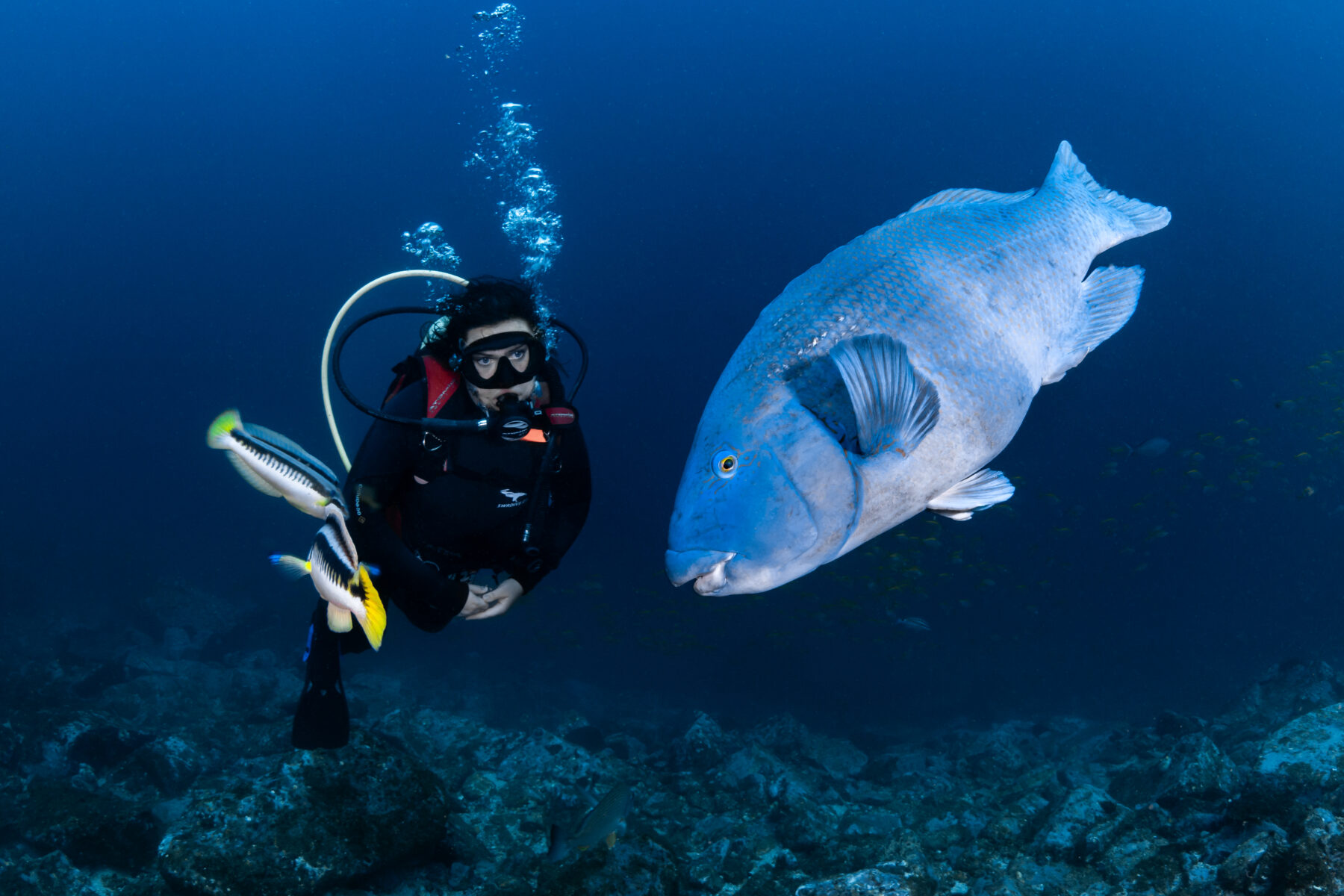

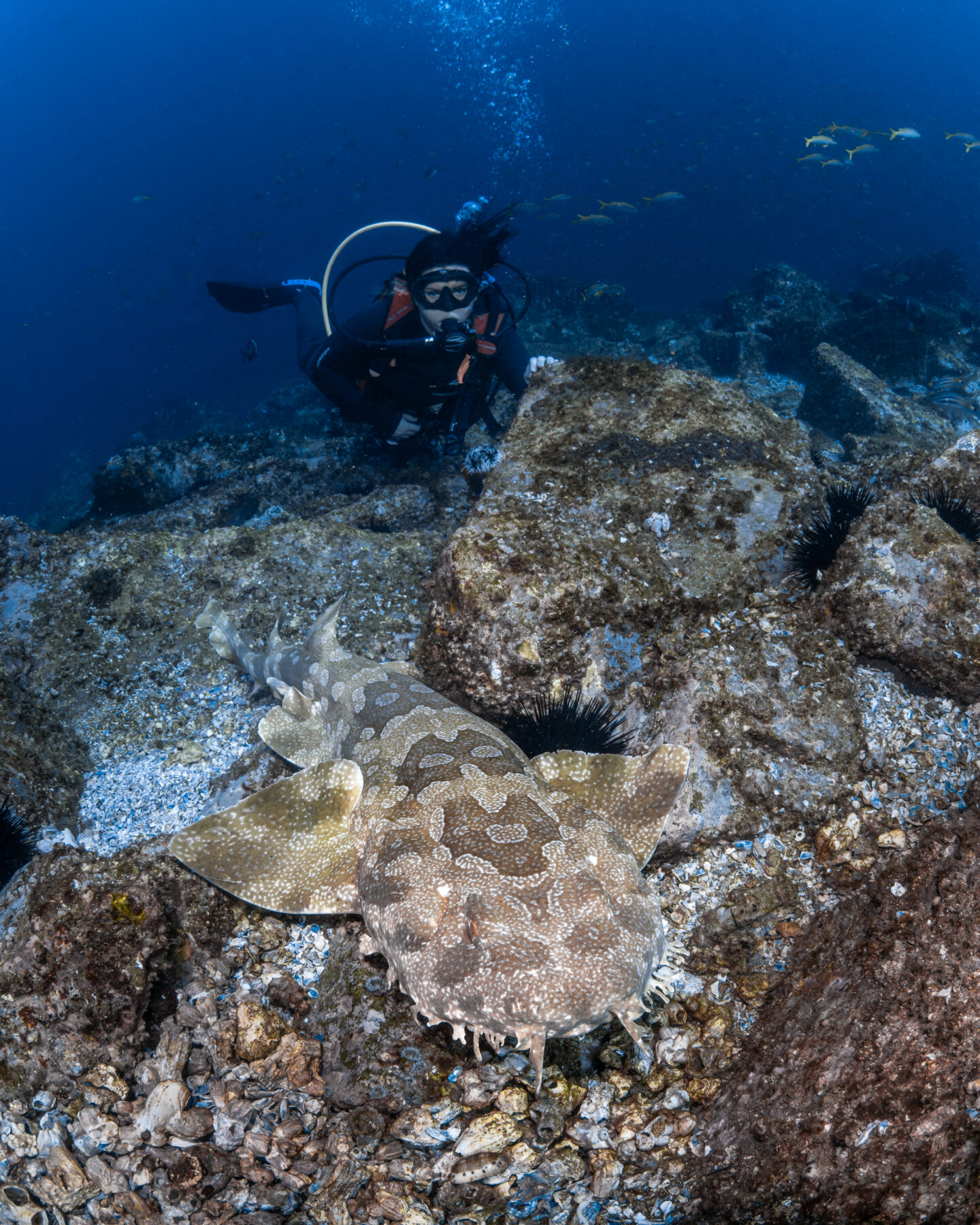
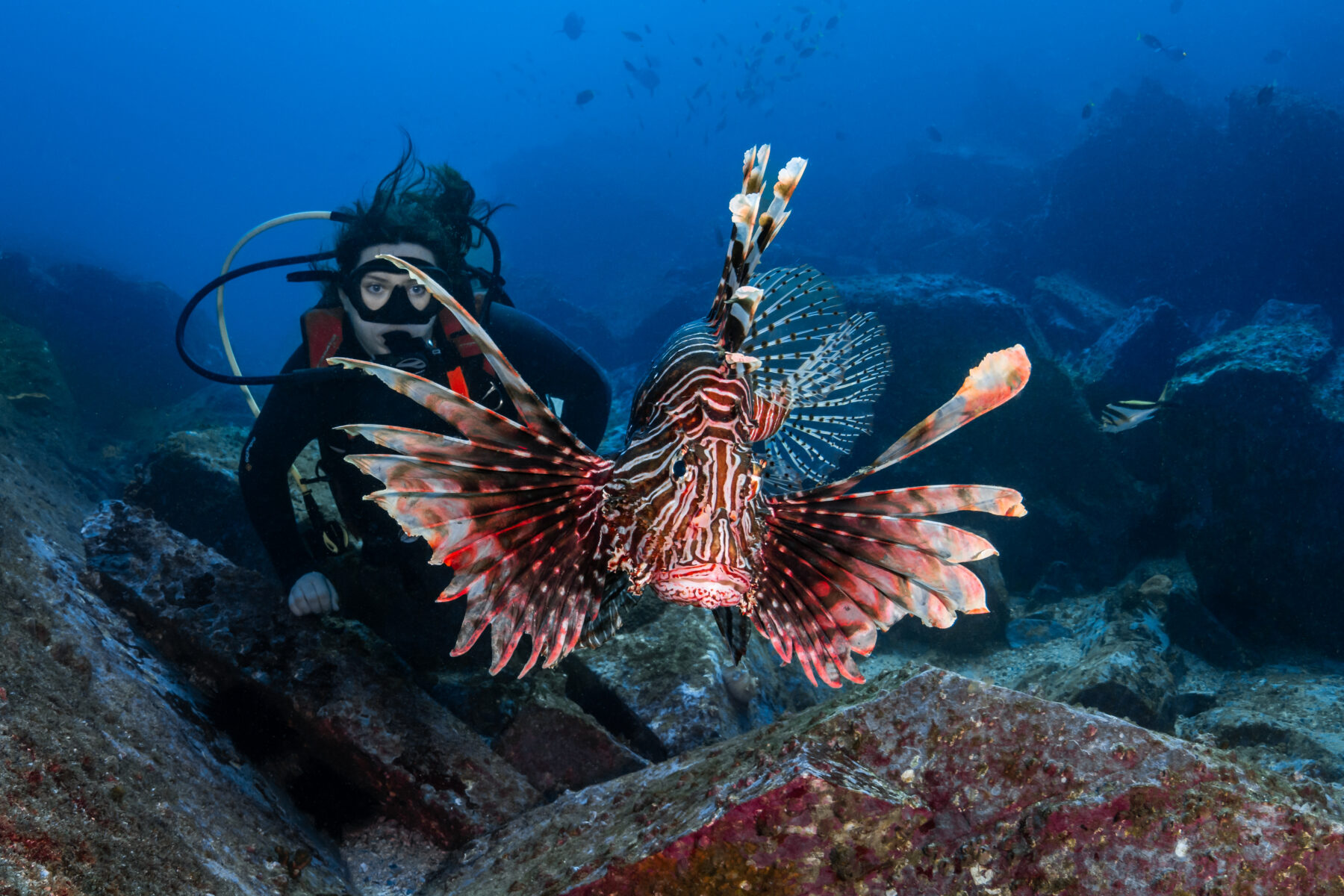
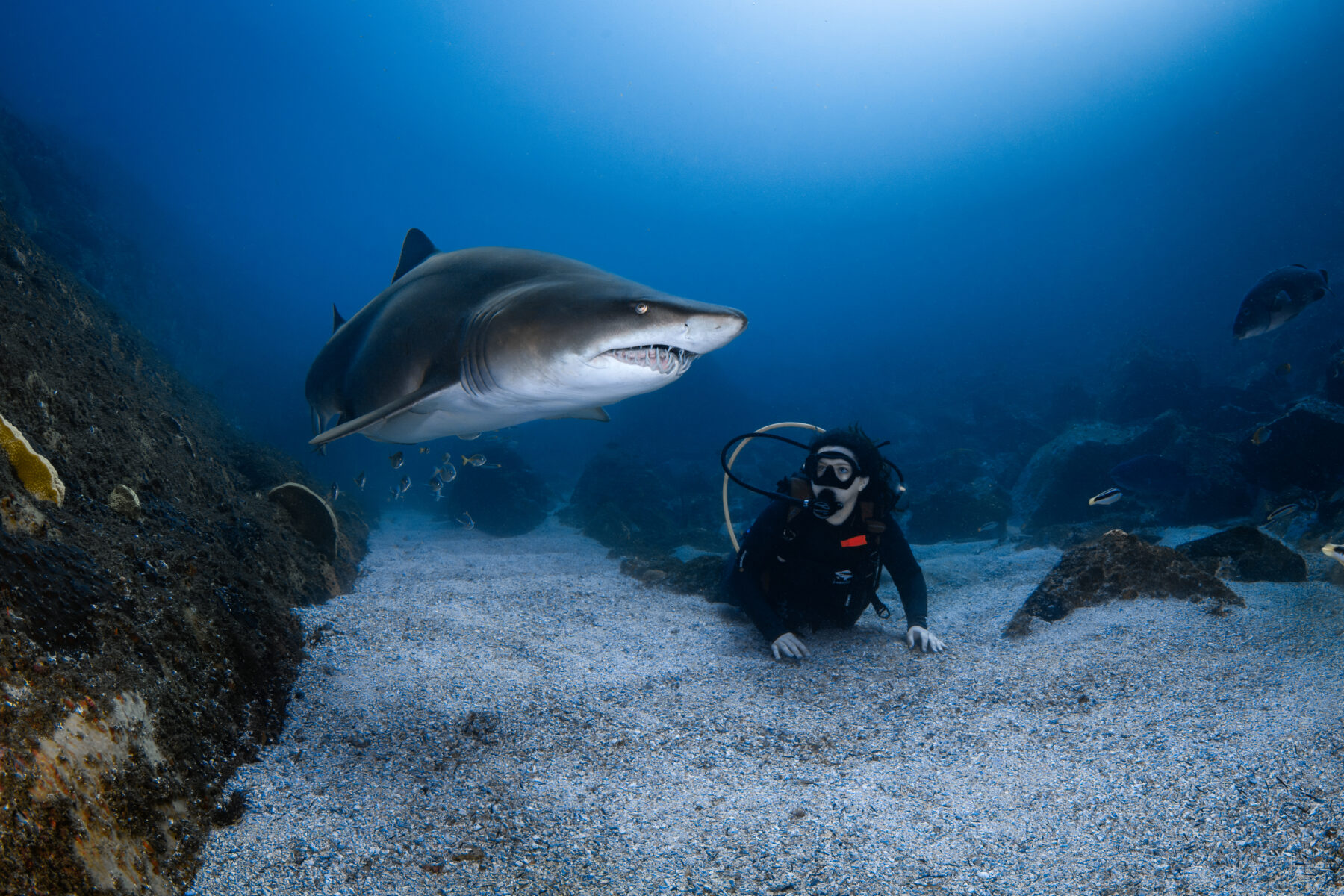
Today, overfishing and pollution remain significant threats but legislative protection undoubtedly saved Australia’s grey nurse. Unfortunately, however, because the species has a naturally low reproductive rate, its numbers have been slow to bounce back. The East Coast population remains critically endangered, with scientists estimating it now includes just 2200 adult individuals.
That’s what makes the permanent aggregation of up to 30 grey nurse at Fish Rock – believed to be one of the largest on the East Coast – particularly special. Being an apex predator, this huge fish is a keystone species, meaning the grey nurse at Fish Rock are crucial to maintaining the extraordinary biodiversity both at the site and in the waters surrounding it.
Grey nurse East Coast aggregation sites are “like a string of pearls”, explains Dr Leonardo Guida, shark scientist and shark conservation leader with the Australian Marine Conservation Society. Fish Rock is one of those pearls.
“It’s a place where grey nurse can rest and feed, because they make these incredible seasonal journeys from the southern part of the NSW coast, from as far south as around Barunguba/Montague Island [about 300km south of Sydney] all the way up to Wolf Rock [near K’gari, formerly Fraser Island, in Queensland] and then return back.” They mate at Wolf Rock and perhaps other northerly locations in the winter before returning to pup in southern waters.
“A significant thing about the Fish Rock site is that it supports the local community through tourism – whether it’s for fishing or diving or biodiversity,” Leonardo says. “And the fact that that site can still do that is incredible; but it can’t do that forever if it’s not protected. Protecting a critically endangered grey nurse site not only saves a species but also essentially saves a local community – enabling the environment to thrive and the community that depends on it.”
Passionate support
There’s certainly a lot of love for Fish Rock, particularly among divers and amateur anglers, not just from locals but across Australia and worldwide.
Perhaps, however, one of its most passionate supporters – and defenders – is local teenager Shalise Leesfield, who has grown up about an hour’s drive from the site, at Lake Cathie. Now aged 18, Shalise has been splashing about in and exploring the coastal waters of northern NSW since she was a small child. She has been scuba diving since her early teens and has grown to become a passionate proponent of marine conservation.
“You go down there [at Fish Rock] on a dive and it’s just a kaleidoscope of colours,” Shalise says. “You’ve got fish of all types and, yes, the sharks are really critical, but it’s not only about them, but every other contributing part in that ecosystem there.”
Shalise has been advocating for a 1500m exclusion zone around the Fish Rock site where people can visit and enjoy it but activities such as fishing aren’t permitted. It was her gentle but persistent advocacy that contributed to Fish Rock being named a Hope Spot in 2021, an important acknowledgement of the site’s significance that may ultimately help see it receive formal protection.

The Hope Spot concept was set up by legendary US-based marine scientist Dr Sylvia Earle through her Mission Blue not-for-profit marine conservation organisation. International wristwatch company Rolex provides significant support for the Mission Blue campaign as part of its Perpetual Planet Initiative to protect and preserve ecologically important ocean areas. There are now more than 160 Hope Spots named worldwide and at least a dozen more currently under consideration.
As a conservationist, Shalise’s style is gentle pragmatism, rather than the strident activism of others of her generation, such as Sweden’s Greta Thunberg. It has led to her rubbing shoulders with and being supported in her efforts to protect Fish Rock not only by Sylvia, but also many other leading lights in global marine conservation including Philippe Cousteau Jr., grandson of famed ocean explorer Jacques Cousteau, and Australia’s renowned marine environmentalist Valerie Taylor.
“Whenever I think about the site, I think of a Jacques quote: ‘The sea, once it casts its spell, holds one in its net of wonder forever,’” Shalise says. “Being able to dive next to these ancient creatures [grey nurse sharks] that have outlived the dinosaurs, and to sit with them and have moments of eye contact, the entire world just stops. It’s such a privilege to know this place and to become so acquainted with it.”



